The Order of Preachers, or the Dominican Order, are a Catholic mendicant order founded by Dominic de Guzman and approved by Pope Innocent III in 1216.
The Order of Preachers, or the Dominican Order, are a Catholic mendicant order founded by Dominic de Guzman and approved by Pope Innocent III in 1216.
The following friars belonging to the order have been proclaimed saints throughout history (for women and Third Order saints see List of Dominican saints and beatified):





Numerous Dominicans were included in the canonization of the 117 martyrs of Vietnam and a group of martyrs in Nagasaki.
Numerous Dominican friars have been beatified, including:
Four Dominican friars have served as Bishop of Rome:
There are five Dominican friars in the College of Cardinals:
Other notable Dominicans include:

The Order of Preachers, commonly known as the Dominican Order, is a Catholic mendicant order of pontifical right that was founded in France by a Castilian priest named Dominic de Guzmán. It was approved by Pope Honorius III via the papal bull Religiosam vitam on 22 December 1216. Members of the order, who are referred to as Dominicans, generally display the letters OP after their names, standing for Ordinis Praedicatorum, meaning 'of the Order of Preachers'. Membership in the order includes friars, nuns, active sisters, and lay or secular Dominicans. More recently, there have been a growing number of associates of the religious sisters who are unrelated to the tertiaries.
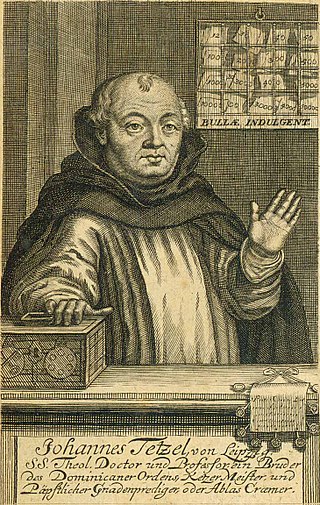
Johann Tetzel was a German Dominican friar and preacher. He was appointed Inquisitor for Poland and Saxony, later becoming the Grand Commissioner for indulgences in Germany. Tetzel was known for granting indulgences on behalf of the Catholic Church in exchange for tithes to the Church. Indulgences grant a degree of expiation of the punishments of purgatory due to sin. However, the misuse of indulgences within the Church largely contributed to Martin Luther writing his Ninety-five Theses. The main usage of the indulgences by Tetzel was to help fund and build the new St. Peter's Basilica in Rome.
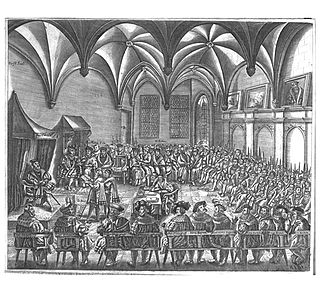
Year 1555 (MDLV) was a common year starting on Tuesday of the Julian calendar.

Saint Dominic,, also known as Dominic de Guzmán, was a Castilian Catholic priest and the founder of the Dominican Order. He is the patron saint of astronomers and natural scientists, and he and his order are traditionally credited with spreading and popularizing the rosary. He is alternatively called Dominic of Osma, Dominic of Caleruega, and Domingo Félix de Guzmán, and, in Britain and Ireland, Saint Sunday.

Thomas Cajetan, OP, also known as Gaetanus, commonly Tommaso de Vio or Thomas de Vio, was an Italian philosopher, theologian, the Master of the Order of Preachers 1508 to 1518, and cardinal from 1517 until his death. He was a leading theologian of his day who is now best known as the spokesman for Catholic opposition to the teachings of Martin Luther and the Protestant Reformation while he was the Pope's legate in Augsburg, and among Catholics for his extensive commentary on the Summa Theologica of Thomas Aquinas.

Bartolomé Carranza was a Navarrese priest of the Dominican Order, theologian and Archbishop of Toledo. He is notable for having been persecuted by the Spanish Inquisition. He spent much of his later life imprisoned on charges of heresy. He was first denounced in 1530, and imprisoned during 1558–1576. The final judgement found no proof of heresy but secluded him to the Dominican cloister of Santa Maria sopra Minerva where he died seven days later.

Raymond of Penyafort was a Catalan Dominican friar in the 13th century, who compiled the Decretals of Gregory IX, a collection of canonical laws that remained a major part of Church law until the 1917 Code of Canon Law abrogated it. He is honored as a saint in the Catholic Church and is the patron saint of canon lawyers.
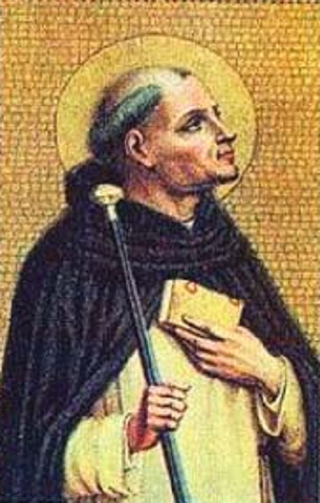
John of Vercelli was the sixth Master General of the Dominican Order (1264-1283).

The Dominican Order has been present in Ireland since 1224 when the first foundation was established in Dublin, a monastic settlement north of the River Liffey, where the Four Courts is located today. This was quickly followed by Drogheda, Kilkenny (1225), Waterford (1226), Limerick (1227) and Cork (city) (1229). The order was reestablished in the 19th century after having been driven out in the 17th century by laws against Catholic religious orders. During the Penal Laws, as other Irish Colleges were established on the continent, in 1633 the Irish Dominicans established, the College of Corpo Santo, Lisbon and College of the Holy Cross, Louvain (1624-1797) to train clergy for ministering in Ireland. San Clemente al Laterano in Rome, was entrusted to the Irish Dominicans in 1677. In 1855, St. Mary's Priory, Tallaght, was established to train members of the order, who would complete their clerical studies in Rome and be ordained in the Basilica San Clemente.
Saints in Anglicanism are people recognised as having lived a holy life and as being an exemplar and model for other Christians. Beginning in the 10th century, the Catholic Church began to centralise and formalise the process of recognising saints through canonisation.
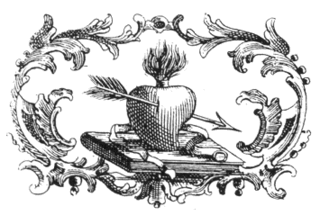
The Order of Saint Augustine, abbreviated OSA, is a mendicant religious order of the Catholic Church. It was founded in 1244 by bringing together several eremitical groups in the Tuscany region who were following the Rule of Saint Augustine, written by Saint Augustine of Hippo in the fifth century.
Bérenger de Landore (1262–1330) was a French Dominican, who became Master of the Order of Preachers (1312–1317), and then Archbishop of Santiago de Compostela (1317-1330). He was from a noble family of southern France.
Saint John or St. John usually refers to either John the Baptist or John the Apostle.

Fernando Niño de Guevara was a Spanish cardinal who was also Archbishop of Seville and Grand Inquisitor of Spain.
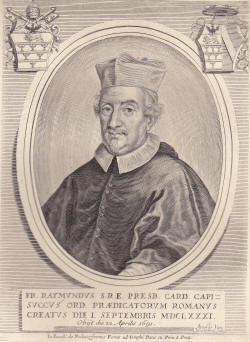
Raimondo Capizucchi was a Roman nobleman, Dominican friar, appointed a cardinal by Pope Innocent XI.
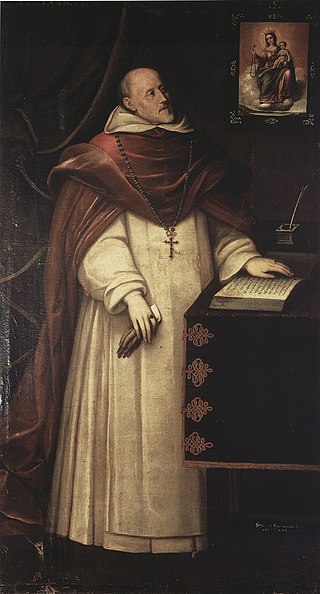
Cristóbal de Torres y Motones, OP was a Spanish-born prelate of the Catholic Church in New Spain. A member of the Dominican Order, in 1635 he was appointed archbishop of the Archdiocese of Santafé en Nueva Granada. There, he was one of the first bishops in New Spain to admit indigenous people to communion, and he later founded Del Rosario University in Bogotá.
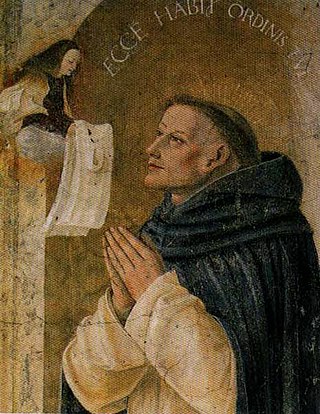
Reginald of Orleans, OP was an Italian Dominican friar and Catholic priest. He was one of the earliest members and a close collaborator of Saint Dominic.